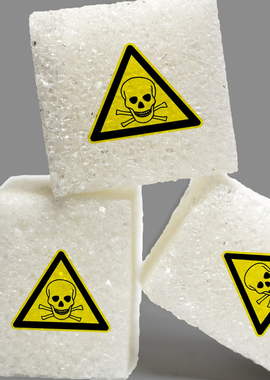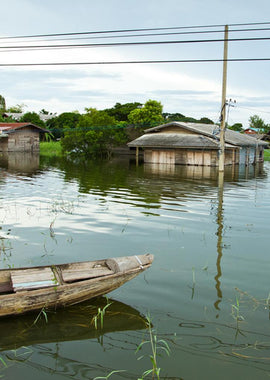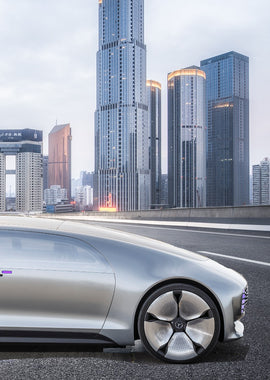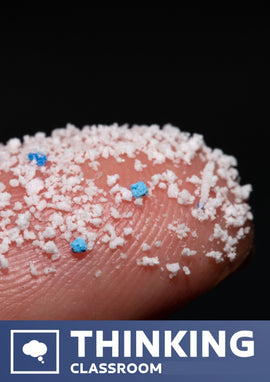Topicals
New short, topical activities based on real-life, up-to-date contexts.
- Grid List
{"id":6804852113479,"title":"Sugar Crisis","handle":"sugar-crisis","description":"\u003ch5\u003eDescription\u003c\/h5\u003e\n\u003cp\u003e\u003cmeta charset=\"utf-8\"\u003eObesity is still on the rise, and so are health problems like diabetes and heart disease. There's a tax on soft drinks to reduce sugar consumption. But did it work? And should the government go further and include all sugary foods and drinks? \u003c\/p\u003e\n\u003cp\u003eThis topical activity will help you teach about diet and the impact of lifestyle on disease. It's ideal GCSE preparation - students lose marks on AO2 and AO3 questions because they can't put together evidence-based answers. The activity use the EDGE method to teach the underlying skill of linking evidence to a claim, so they can write better long answers. \u003c\/p\u003e\n\u003ch4\u003e\u003cstrong\u003eCurriculum links\u003c\/strong\u003e\u003c\/h4\u003e\n\u003cul\u003e\n\u003cli\u003eBlueprint: Digestive system\u003c\/li\u003e\n\u003cli\u003eKS3 NC: The consequences of imbalances in the diet, including obesity\u003c\/li\u003e\n\u003cli\u003eKS4 NC: The impact of lifestyle factors on the incidence of non-communicable diseases\u003c\/li\u003e\n\u003cli\u003eSkill:s Support claims with evidence (learn), Identify relationships \u0026amp; patterns (practice)\u003c\/li\u003e\n\u003c\/ul\u003e\n\u003cp\u003e\u003cem\u003eActivity contents\u003c\/em\u003e\u003c\/p\u003e\n\u003cul\u003e\n\u003cli\u003eTeachers guide\u003c\/li\u003e\n\u003cli\u003ePDF file\u003c\/li\u003e\n\u003c\/ul\u003e\n\u003cp\u003eThe activity is delivered as a zip file. After you checkout, you will be sent an email with the link to download it.\u003cstrong\u003e\u003cspan style=\"color: #ff2a00;\"\u003e \u003c\/span\u003e\u003c\/strong\u003e\u003c\/p\u003e\n\u003ch4\u003e\n\u003cstrong\u003e\u003c\/strong\u003e\u003cbr\u003e\n\u003c\/h4\u003e\n\u003ch4\u003e\u003cstrong\u003eWeblinks\u003c\/strong\u003e\u003c\/h4\u003e\n\u003cbr\u003e\u003ciframe src=\"https:\/\/raindrop.io\/MasteryScience\/sugar-crisis-34587314\/embed\" style=\"border: 0; width: 100%; height: 450px;\" frameborder=\"0\" allowfullscreen=\"\"\u003e\u003c\/iframe\u003e","published_at":"2023-05-25T15:08:11+01:00","created_at":"2023-05-24T16:24:13+01:00","vendor":"Mastery Science","type":"Activity","tags":["Learning stage_Analyse","Learning stage_Apply","New","Topicals","Year 8 Tissues \u0026 organs","Year_Year 10","Year_Year 8","Year_Year 9"],"price":0,"price_min":0,"price_max":0,"available":true,"price_varies":false,"compare_at_price":null,"compare_at_price_min":0,"compare_at_price_max":0,"compare_at_price_varies":false,"variants":[{"id":40045133529159,"title":"Default Title","option1":"Default Title","option2":null,"option3":null,"sku":"","requires_shipping":false,"taxable":false,"featured_image":null,"available":true,"name":"Sugar Crisis","public_title":null,"options":["Default Title"],"price":0,"weight":0,"compare_at_price":null,"inventory_quantity":-37,"inventory_management":null,"inventory_policy":"deny","barcode":"","requires_selling_plan":false,"selling_plan_allocations":[]}],"images":["\/\/shop.masteryscience.com\/cdn\/shop\/files\/sugar.png?v=1684943326","\/\/shop.masteryscience.com\/cdn\/shop\/files\/Screenshot2023-05-25124650.png?v=1685015238","\/\/shop.masteryscience.com\/cdn\/shop\/files\/Screenshot2023-05-25124610.png?v=1685015238"],"featured_image":"\/\/shop.masteryscience.com\/cdn\/shop\/files\/sugar.png?v=1684943326","options":["Title"],"media":[{"alt":null,"id":21676811812935,"position":1,"preview_image":{"aspect_ratio":0.71,"height":1020,"width":724,"src":"\/\/shop.masteryscience.com\/cdn\/shop\/files\/sugar.png?v=1684943326"},"aspect_ratio":0.71,"height":1020,"media_type":"image","src":"\/\/shop.masteryscience.com\/cdn\/shop\/files\/sugar.png?v=1684943326","width":724},{"alt":null,"id":21677346914375,"position":2,"preview_image":{"aspect_ratio":1.446,"height":632,"width":914,"src":"\/\/shop.masteryscience.com\/cdn\/shop\/files\/Screenshot2023-05-25124650.png?v=1685015238"},"aspect_ratio":1.446,"height":632,"media_type":"image","src":"\/\/shop.masteryscience.com\/cdn\/shop\/files\/Screenshot2023-05-25124650.png?v=1685015238","width":914},{"alt":null,"id":21677346947143,"position":3,"preview_image":{"aspect_ratio":1.447,"height":633,"width":916,"src":"\/\/shop.masteryscience.com\/cdn\/shop\/files\/Screenshot2023-05-25124610.png?v=1685015238"},"aspect_ratio":1.447,"height":633,"media_type":"image","src":"\/\/shop.masteryscience.com\/cdn\/shop\/files\/Screenshot2023-05-25124610.png?v=1685015238","width":916}],"requires_selling_plan":false,"selling_plan_groups":[],"content":"\u003ch5\u003eDescription\u003c\/h5\u003e\n\u003cp\u003e\u003cmeta charset=\"utf-8\"\u003eObesity is still on the rise, and so are health problems like diabetes and heart disease. There's a tax on soft drinks to reduce sugar consumption. But did it work? And should the government go further and include all sugary foods and drinks? \u003c\/p\u003e\n\u003cp\u003eThis topical activity will help you teach about diet and the impact of lifestyle on disease. It's ideal GCSE preparation - students lose marks on AO2 and AO3 questions because they can't put together evidence-based answers. The activity use the EDGE method to teach the underlying skill of linking evidence to a claim, so they can write better long answers. \u003c\/p\u003e\n\u003ch4\u003e\u003cstrong\u003eCurriculum links\u003c\/strong\u003e\u003c\/h4\u003e\n\u003cul\u003e\n\u003cli\u003eBlueprint: Digestive system\u003c\/li\u003e\n\u003cli\u003eKS3 NC: The consequences of imbalances in the diet, including obesity\u003c\/li\u003e\n\u003cli\u003eKS4 NC: The impact of lifestyle factors on the incidence of non-communicable diseases\u003c\/li\u003e\n\u003cli\u003eSkill:s Support claims with evidence (learn), Identify relationships \u0026amp; patterns (practice)\u003c\/li\u003e\n\u003c\/ul\u003e\n\u003cp\u003e\u003cem\u003eActivity contents\u003c\/em\u003e\u003c\/p\u003e\n\u003cul\u003e\n\u003cli\u003eTeachers guide\u003c\/li\u003e\n\u003cli\u003ePDF file\u003c\/li\u003e\n\u003c\/ul\u003e\n\u003cp\u003eThe activity is delivered as a zip file. After you checkout, you will be sent an email with the link to download it.\u003cstrong\u003e\u003cspan style=\"color: #ff2a00;\"\u003e \u003c\/span\u003e\u003c\/strong\u003e\u003c\/p\u003e\n\u003ch4\u003e\n\u003cstrong\u003e\u003c\/strong\u003e\u003cbr\u003e\n\u003c\/h4\u003e\n\u003ch4\u003e\u003cstrong\u003eWeblinks\u003c\/strong\u003e\u003c\/h4\u003e\n\u003cbr\u003e\u003ciframe src=\"https:\/\/raindrop.io\/MasteryScience\/sugar-crisis-34587314\/embed\" style=\"border: 0; width: 100%; height: 450px;\" frameborder=\"0\" allowfullscreen=\"\"\u003e\u003c\/iframe\u003e"}
You may also like:
Sugar Crisis
No reviews
£0.00
Description Obesity is still on the rise, and so are health problems like diabetes and heart disease. There's a tax...
{"id":6769410539591,"title":"Sinking Islands","handle":"sinking-islands","description":"\u003ch5\u003eDescription\u003c\/h5\u003e\n\u003cp\u003eThe low-lying Pacific nation of Kiribati could be the first country to disappear because of climate change. Rising sea levels due to climate change have already claimed two of the islands with the rest threatened. The President has recently revealed a new idea – to raise up the islands using rocks from the seabed, an ambitious plan that will take time. In this short activity, students plot a line graph by calculating uncertainties to find out just how long Kiribati has left. \u003c\/p\u003e\n\u003cp\u003e\u003cmeta charset=\"utf-8\"\u003e\u003cem data-mce-fragment=\"1\"\u003eBlueprint curriculum link\u003c\/em\u003e\u003c\/p\u003e\n\u003cul\u003e\n\u003cli\u003eAtmosphere: Global warming\u003c\/li\u003e\n\u003cli\u003eSkill: Consider different perspectives\u003c\/li\u003e\n\u003c\/ul\u003e\n\u003cp\u003e\u003cem\u003eActivity contents\u003c\/em\u003e\u003c\/p\u003e\n\u003cul\u003e\n\u003cli\u003eTeachers guide\u003c\/li\u003e\n\u003cli\u003ePDF file\u003c\/li\u003e\n\u003c\/ul\u003e\n\u003cp\u003eThe activity is delivered as a zip file. After you checkout, you will be sent an email with the link to download it.\u003cstrong\u003e\u003cspan style=\"color: #ff2a00;\"\u003e \u003c\/span\u003e \u003c\/strong\u003e\u003c\/p\u003e\n\u003cp\u003e \u003c\/p\u003e\n\u003ch5\u003e\u003cstrong\u003eRunning Notes\u003c\/strong\u003e\u003c\/h5\u003e\n\u003cp\u003e\u003cstrong\u003eSlide 2: \u003c\/strong\u003eDisplay the news story and click on the link to show the video clip. Ask students to imagine their feelings if they lived in Kiribati (pronounced \u003cem\u003eKiribas)\u003c\/em\u003e. Ask them to discuss reasons for sea level rises. Increasing temperatures cause sea level increases in two ways – land and sea ice melt, and oceans expand as they get warmer. Note: water only expands when it is heated once it reaches a temperature beyond 4°C.\u003c\/p\u003e\n\u003cp\u003e\u003cstrong\u003eSlide 3: \u003c\/strong\u003eIntroduce the President and his plan.\u003c\/p\u003e\n\u003cp\u003e\u003cstrong\u003eSlide 4: \u003c\/strong\u003eSet the task, and then ask pairs or individuals to complete the tasks on SS1. The key point here is about uncertainty, used in its scientific sense – you might need to check that all students understand the explanation about this term before starting the questions.\u003c\/p\u003e\n\u003cp\u003e\u003cstrong\u003eSlide 7; \u003c\/strong\u003eCheck student’s answers using the completed graph\u003cstrong\u003e. \u003c\/strong\u003eThis shows that the earliest time for the sea level rise to reach 40 cm is 2058. Scientists cannot be sure about this, because it relies on predicted data – factors that affect sea level rise might change in the future. \u003cspan\u003eAsk the class: what pattern do they see in uncertainty as time goes on? Can they suggest why? \u003c\/span\u003e\u003c\/p\u003e\n\u003cp\u003e\u003cbr\u003e\u003c\/p\u003e\n\u003ch5\u003e\u003cstrong\u003eWeblinks\u003c\/strong\u003e\u003c\/h5\u003e\n\u003cp\u003e\u003cbr\u003e\u003ciframe src=\"https:\/\/raindrop.io\/MasteryScience\/sinking-islands-31807791\/embed\" style=\"border: 0; width: 100%; height: 450px;\" frameborder=\"0\" allowfullscreen=\"\"\u003e\u003c\/iframe\u003e\u003c\/p\u003e\n\u003cp\u003e\u003cbr\u003e\u003c\/p\u003e\n\u003cp\u003e \u003c\/p\u003e","published_at":"2023-03-19T07:16:31+00:00","created_at":"2023-03-15T11:06:52+00:00","vendor":"Mastery Science","type":"Activity","tags":["Blueprint unit_Y10 atmosphere","Learning stage_Analyse","Learning stage_Apply","New","Topicals","Y10 Atmosphere"],"price":0,"price_min":0,"price_max":0,"available":true,"price_varies":false,"compare_at_price":null,"compare_at_price_min":0,"compare_at_price_max":0,"compare_at_price_varies":false,"variants":[{"id":39973159731271,"title":"Default Title","option1":"Default Title","option2":null,"option3":null,"sku":"","requires_shipping":false,"taxable":false,"featured_image":null,"available":true,"name":"Sinking Islands","public_title":null,"options":["Default Title"],"price":0,"weight":0,"compare_at_price":null,"inventory_quantity":-55,"inventory_management":null,"inventory_policy":"deny","barcode":"","requires_selling_plan":false,"selling_plan_allocations":[]}],"images":["\/\/shop.masteryscience.com\/cdn\/shop\/products\/sinking_island_website.jpg?v=1678879029","\/\/shop.masteryscience.com\/cdn\/shop\/products\/islands1.png?v=1678879206","\/\/shop.masteryscience.com\/cdn\/shop\/products\/islands2.png?v=1678879206"],"featured_image":"\/\/shop.masteryscience.com\/cdn\/shop\/products\/sinking_island_website.jpg?v=1678879029","options":["Title"],"media":[{"alt":null,"id":21611558010951,"position":1,"preview_image":{"aspect_ratio":0.71,"height":1020,"width":724,"src":"\/\/shop.masteryscience.com\/cdn\/shop\/products\/sinking_island_website.jpg?v=1678879029"},"aspect_ratio":0.71,"height":1020,"media_type":"image","src":"\/\/shop.masteryscience.com\/cdn\/shop\/products\/sinking_island_website.jpg?v=1678879029","width":724},{"alt":null,"id":21611564990535,"position":2,"preview_image":{"aspect_ratio":1.452,"height":682,"width":990,"src":"\/\/shop.masteryscience.com\/cdn\/shop\/products\/islands1.png?v=1678879206"},"aspect_ratio":1.452,"height":682,"media_type":"image","src":"\/\/shop.masteryscience.com\/cdn\/shop\/products\/islands1.png?v=1678879206","width":990},{"alt":null,"id":21611564957767,"position":3,"preview_image":{"aspect_ratio":1.441,"height":678,"width":977,"src":"\/\/shop.masteryscience.com\/cdn\/shop\/products\/islands2.png?v=1678879206"},"aspect_ratio":1.441,"height":678,"media_type":"image","src":"\/\/shop.masteryscience.com\/cdn\/shop\/products\/islands2.png?v=1678879206","width":977}],"requires_selling_plan":false,"selling_plan_groups":[],"content":"\u003ch5\u003eDescription\u003c\/h5\u003e\n\u003cp\u003eThe low-lying Pacific nation of Kiribati could be the first country to disappear because of climate change. Rising sea levels due to climate change have already claimed two of the islands with the rest threatened. The President has recently revealed a new idea – to raise up the islands using rocks from the seabed, an ambitious plan that will take time. In this short activity, students plot a line graph by calculating uncertainties to find out just how long Kiribati has left. \u003c\/p\u003e\n\u003cp\u003e\u003cmeta charset=\"utf-8\"\u003e\u003cem data-mce-fragment=\"1\"\u003eBlueprint curriculum link\u003c\/em\u003e\u003c\/p\u003e\n\u003cul\u003e\n\u003cli\u003eAtmosphere: Global warming\u003c\/li\u003e\n\u003cli\u003eSkill: Consider different perspectives\u003c\/li\u003e\n\u003c\/ul\u003e\n\u003cp\u003e\u003cem\u003eActivity contents\u003c\/em\u003e\u003c\/p\u003e\n\u003cul\u003e\n\u003cli\u003eTeachers guide\u003c\/li\u003e\n\u003cli\u003ePDF file\u003c\/li\u003e\n\u003c\/ul\u003e\n\u003cp\u003eThe activity is delivered as a zip file. After you checkout, you will be sent an email with the link to download it.\u003cstrong\u003e\u003cspan style=\"color: #ff2a00;\"\u003e \u003c\/span\u003e \u003c\/strong\u003e\u003c\/p\u003e\n\u003cp\u003e \u003c\/p\u003e\n\u003ch5\u003e\u003cstrong\u003eRunning Notes\u003c\/strong\u003e\u003c\/h5\u003e\n\u003cp\u003e\u003cstrong\u003eSlide 2: \u003c\/strong\u003eDisplay the news story and click on the link to show the video clip. Ask students to imagine their feelings if they lived in Kiribati (pronounced \u003cem\u003eKiribas)\u003c\/em\u003e. Ask them to discuss reasons for sea level rises. Increasing temperatures cause sea level increases in two ways – land and sea ice melt, and oceans expand as they get warmer. Note: water only expands when it is heated once it reaches a temperature beyond 4°C.\u003c\/p\u003e\n\u003cp\u003e\u003cstrong\u003eSlide 3: \u003c\/strong\u003eIntroduce the President and his plan.\u003c\/p\u003e\n\u003cp\u003e\u003cstrong\u003eSlide 4: \u003c\/strong\u003eSet the task, and then ask pairs or individuals to complete the tasks on SS1. The key point here is about uncertainty, used in its scientific sense – you might need to check that all students understand the explanation about this term before starting the questions.\u003c\/p\u003e\n\u003cp\u003e\u003cstrong\u003eSlide 7; \u003c\/strong\u003eCheck student’s answers using the completed graph\u003cstrong\u003e. \u003c\/strong\u003eThis shows that the earliest time for the sea level rise to reach 40 cm is 2058. Scientists cannot be sure about this, because it relies on predicted data – factors that affect sea level rise might change in the future. \u003cspan\u003eAsk the class: what pattern do they see in uncertainty as time goes on? Can they suggest why? \u003c\/span\u003e\u003c\/p\u003e\n\u003cp\u003e\u003cbr\u003e\u003c\/p\u003e\n\u003ch5\u003e\u003cstrong\u003eWeblinks\u003c\/strong\u003e\u003c\/h5\u003e\n\u003cp\u003e\u003cbr\u003e\u003ciframe src=\"https:\/\/raindrop.io\/MasteryScience\/sinking-islands-31807791\/embed\" style=\"border: 0; width: 100%; height: 450px;\" frameborder=\"0\" allowfullscreen=\"\"\u003e\u003c\/iframe\u003e\u003c\/p\u003e\n\u003cp\u003e\u003cbr\u003e\u003c\/p\u003e\n\u003cp\u003e \u003c\/p\u003e"}
You may also like:
Sinking Islands
2 reviews
£0.00
Description The low-lying Pacific nation of Kiribati could be the first country to disappear because of climate change. Rising sea...
{"id":6760294449223,"title":"Car Wars 2030","handle":"car-wars-2030","description":"\u003ch5\u003eDescription\u003c\/h5\u003e\n\u003cp\u003eWhat energy source will power students' cars in the future: Electricity? Hydrogen? Biofuel? This short activity gets students to consider efficiency, environmental and economic implications of each energy source to judge which will be most popular in 2030. \u003c\/p\u003e\n\u003cp\u003e\u003cmeta charset=\"utf-8\"\u003e\u003cem data-mce-fragment=\"1\"\u003eBlueprint curriculum link\u003c\/em\u003e\u003c\/p\u003e\n\u003cul\u003e\n\u003cli\u003eAtmosphere: Earth's atmosphere\u003c\/li\u003e\n\u003cli\u003eSkill: Consider different perspectives\u003c\/li\u003e\n\u003c\/ul\u003e\n\u003cp\u003e\u003cem\u003eActivity contents\u003c\/em\u003e\u003c\/p\u003e\n\u003cul\u003e\n\u003cli\u003eTeachers guide\u003c\/li\u003e\n\u003cli\u003ePDF file\u003c\/li\u003e\n\u003c\/ul\u003e\n\u003cp\u003eThe activity is delivered as a zip file. After you checkout, you will be sent an email with the link to download it.\u003c\/p\u003e\n\u003cp\u003e\u003cbr\u003e\u003c\/p\u003e\n\u003ch5\u003e\u003cstrong\u003eRunning Notes\u003c\/strong\u003e\u003c\/h5\u003e\n\u003cp\u003e\u003cstrong\u003e\u003cspan\u003eSlide 2: \u003c\/span\u003e\u003c\/strong\u003e\u003cspan\u003eIntroduce the task: to choose an energy source for their first car in 2030.\u003c\/span\u003e\u003c\/p\u003e\n\u003cp\u003e\u003cstrong\u003e\u003cspan\u003eSlide 3: \u003c\/span\u003e\u003c\/strong\u003e\u003cspan\u003eAsk them to think of it like a race between the four energy sources. Ask the class: which of these energy sources have you heard of? Which do you think is currently the most popular? Click on the button to reveal that oil is currently way out in front, with electricity in second place.\u003c\/span\u003e\u003c\/p\u003e\n\u003cp\u003e\u003cstrong\u003e\u003cspan\u003eSlide 4: \u003c\/span\u003e\u003c\/strong\u003e\u003cspan\u003eReveal a recent headline – that the UK government is going to ban the sale of new cars with combustion engines (those that burn petrol, diesel or biofuel) in 2030. Discuss with the class why – it is because they release carbon dioxide when the fuel in the engine burns.\u003c\/span\u003e\u003c\/p\u003e\n\u003cp\u003e\u003cstrong\u003e\u003cspan\u003eSlide 5: \u003c\/span\u003e\u003c\/strong\u003e\u003cspan\u003eReveal that oil and biofuel are now out of the race, so it is down to electricity and hydrogen. Clicking on the cars will reveal more information about each. There are optional extras in the weblinks that you can use to teach more about each energy source at this point.\u003c\/span\u003e\u003c\/p\u003e\n\u003cp\u003e\u003cstrong\u003e\u003cspan\u003eSlide 6: \u003c\/span\u003e\u003c\/strong\u003e\u003cspan\u003eIntroduce how they will decide between the two remaining energy sources. Give each pair\/group a copy of \u003cstrong\u003eSS1\u003c\/strong\u003e and \u003cstrong\u003eSS2\u003c\/strong\u003e.\u003cstrong\u003e \u003c\/strong\u003eThey follow the instructions to award points to each energy source and work out the winner. You can use \u003cstrong\u003eslide 10 \u003c\/strong\u003eto check they have assigned the cards to the right places in the table before they calculate their points. \u003c\/span\u003e\u003c\/p\u003e\n\u003cp\u003e\u003cspan\u003eDiscuss with the class why they think things might change in the future – why might the other car be the winner? What things could change?\u003c\/span\u003e\u003c\/p\u003e\n\u003cbr\u003e\n\u003ch5\u003e\u003cstrong\u003eWeblinks\u003c\/strong\u003e\u003c\/h5\u003e\n\u003cbr\u003e \u003ciframe style=\"border: 0; width: 100%; height: 450px;\" src=\"https:\/\/raindrop.io\/MasteryScience\/car-wars-2030-31997333\/embed\" allowfullscreen=\"\" frameborder=\"0\"\u003e\u003c\/iframe\u003e","published_at":"2023-03-08T18:17:33+00:00","created_at":"2023-03-08T15:45:52+00:00","vendor":"Mastery Science","type":"Activity","tags":["Big Idea_Matter","Blueprint unit_Y10 atmosphere","Learning stage_Analyse","Learning stage_Apply","New","Topicals","Y10 Atmosphere"],"price":0,"price_min":0,"price_max":0,"available":true,"price_varies":false,"compare_at_price":null,"compare_at_price_min":0,"compare_at_price_max":0,"compare_at_price_varies":false,"variants":[{"id":39968835240007,"title":"Default Title","option1":"Default Title","option2":null,"option3":null,"sku":"","requires_shipping":false,"taxable":false,"featured_image":null,"available":true,"name":"Car Wars 2030","public_title":null,"options":["Default Title"],"price":0,"weight":0,"compare_at_price":null,"inventory_quantity":-52,"inventory_management":null,"inventory_policy":"deny","barcode":"","requires_selling_plan":false,"selling_plan_allocations":[]}],"images":["\/\/shop.masteryscience.com\/cdn\/shop\/products\/carwarswebsite.jpg?v=1678292704","\/\/shop.masteryscience.com\/cdn\/shop\/products\/carwars2.png?v=1678292704","\/\/shop.masteryscience.com\/cdn\/shop\/products\/carwars1.png?v=1678292704"],"featured_image":"\/\/shop.masteryscience.com\/cdn\/shop\/products\/carwarswebsite.jpg?v=1678292704","options":["Title"],"media":[{"alt":null,"id":21605647351879,"position":1,"preview_image":{"aspect_ratio":0.71,"height":1020,"width":724,"src":"\/\/shop.masteryscience.com\/cdn\/shop\/products\/carwarswebsite.jpg?v=1678292704"},"aspect_ratio":0.71,"height":1020,"media_type":"image","src":"\/\/shop.masteryscience.com\/cdn\/shop\/products\/carwarswebsite.jpg?v=1678292704","width":724},{"alt":null,"id":21605628641351,"position":2,"preview_image":{"aspect_ratio":1.455,"height":666,"width":969,"src":"\/\/shop.masteryscience.com\/cdn\/shop\/products\/carwars2.png?v=1678292704"},"aspect_ratio":1.455,"height":666,"media_type":"image","src":"\/\/shop.masteryscience.com\/cdn\/shop\/products\/carwars2.png?v=1678292704","width":969},{"alt":null,"id":21605628674119,"position":3,"preview_image":{"aspect_ratio":1.49,"height":639,"width":952,"src":"\/\/shop.masteryscience.com\/cdn\/shop\/products\/carwars1.png?v=1678292704"},"aspect_ratio":1.49,"height":639,"media_type":"image","src":"\/\/shop.masteryscience.com\/cdn\/shop\/products\/carwars1.png?v=1678292704","width":952}],"requires_selling_plan":false,"selling_plan_groups":[],"content":"\u003ch5\u003eDescription\u003c\/h5\u003e\n\u003cp\u003eWhat energy source will power students' cars in the future: Electricity? Hydrogen? Biofuel? This short activity gets students to consider efficiency, environmental and economic implications of each energy source to judge which will be most popular in 2030. \u003c\/p\u003e\n\u003cp\u003e\u003cmeta charset=\"utf-8\"\u003e\u003cem data-mce-fragment=\"1\"\u003eBlueprint curriculum link\u003c\/em\u003e\u003c\/p\u003e\n\u003cul\u003e\n\u003cli\u003eAtmosphere: Earth's atmosphere\u003c\/li\u003e\n\u003cli\u003eSkill: Consider different perspectives\u003c\/li\u003e\n\u003c\/ul\u003e\n\u003cp\u003e\u003cem\u003eActivity contents\u003c\/em\u003e\u003c\/p\u003e\n\u003cul\u003e\n\u003cli\u003eTeachers guide\u003c\/li\u003e\n\u003cli\u003ePDF file\u003c\/li\u003e\n\u003c\/ul\u003e\n\u003cp\u003eThe activity is delivered as a zip file. After you checkout, you will be sent an email with the link to download it.\u003c\/p\u003e\n\u003cp\u003e\u003cbr\u003e\u003c\/p\u003e\n\u003ch5\u003e\u003cstrong\u003eRunning Notes\u003c\/strong\u003e\u003c\/h5\u003e\n\u003cp\u003e\u003cstrong\u003e\u003cspan\u003eSlide 2: \u003c\/span\u003e\u003c\/strong\u003e\u003cspan\u003eIntroduce the task: to choose an energy source for their first car in 2030.\u003c\/span\u003e\u003c\/p\u003e\n\u003cp\u003e\u003cstrong\u003e\u003cspan\u003eSlide 3: \u003c\/span\u003e\u003c\/strong\u003e\u003cspan\u003eAsk them to think of it like a race between the four energy sources. Ask the class: which of these energy sources have you heard of? Which do you think is currently the most popular? Click on the button to reveal that oil is currently way out in front, with electricity in second place.\u003c\/span\u003e\u003c\/p\u003e\n\u003cp\u003e\u003cstrong\u003e\u003cspan\u003eSlide 4: \u003c\/span\u003e\u003c\/strong\u003e\u003cspan\u003eReveal a recent headline – that the UK government is going to ban the sale of new cars with combustion engines (those that burn petrol, diesel or biofuel) in 2030. Discuss with the class why – it is because they release carbon dioxide when the fuel in the engine burns.\u003c\/span\u003e\u003c\/p\u003e\n\u003cp\u003e\u003cstrong\u003e\u003cspan\u003eSlide 5: \u003c\/span\u003e\u003c\/strong\u003e\u003cspan\u003eReveal that oil and biofuel are now out of the race, so it is down to electricity and hydrogen. Clicking on the cars will reveal more information about each. There are optional extras in the weblinks that you can use to teach more about each energy source at this point.\u003c\/span\u003e\u003c\/p\u003e\n\u003cp\u003e\u003cstrong\u003e\u003cspan\u003eSlide 6: \u003c\/span\u003e\u003c\/strong\u003e\u003cspan\u003eIntroduce how they will decide between the two remaining energy sources. Give each pair\/group a copy of \u003cstrong\u003eSS1\u003c\/strong\u003e and \u003cstrong\u003eSS2\u003c\/strong\u003e.\u003cstrong\u003e \u003c\/strong\u003eThey follow the instructions to award points to each energy source and work out the winner. You can use \u003cstrong\u003eslide 10 \u003c\/strong\u003eto check they have assigned the cards to the right places in the table before they calculate their points. \u003c\/span\u003e\u003c\/p\u003e\n\u003cp\u003e\u003cspan\u003eDiscuss with the class why they think things might change in the future – why might the other car be the winner? What things could change?\u003c\/span\u003e\u003c\/p\u003e\n\u003cbr\u003e\n\u003ch5\u003e\u003cstrong\u003eWeblinks\u003c\/strong\u003e\u003c\/h5\u003e\n\u003cbr\u003e \u003ciframe style=\"border: 0; width: 100%; height: 450px;\" src=\"https:\/\/raindrop.io\/MasteryScience\/car-wars-2030-31997333\/embed\" allowfullscreen=\"\" frameborder=\"0\"\u003e\u003c\/iframe\u003e"}
You may also like:
Car Wars 2030
No reviews
£0.00
Description What energy source will power students' cars in the future: Electricity? Hydrogen? Biofuel? This short activity gets students to...
{"id":6757253677127,"title":"Ditch microplastics: Thinking Classroom version","handle":"microplastic-challenge","description":"\u003ch5\u003eShort description\u003c\/h5\u003e\n\u003cp\u003ePlastic objects, like the synthetic fabrics our clothes are made from, break into tiny bits - microplastics. They have been detected in human blood and whilst we don't know their impact on health, there is evidence they can damage cells.\u003cbr\u003e\u003c\/p\u003e\n\u003cp data-pm-slice=\"1 1 []\"\u003e\u003cspan class=\"text-color\"\u003e\u003cspan\u003eIn this activity, students apply knowledge about separating mixtures to design a filter for a washing machine that stops microplastics winding up in the ocean. Students can peer or self-assess their work using the rubric.\u003c\/span\u003e\u003c\/span\u003e\u003c\/p\u003e\n\u003cp\u003eThe new version integrates practices from Peter Liljedahl's\u003cspan\u003e \u003c\/span\u003e\u003ca href=\"https:\/\/www.amazon.co.uk\/Building-Thinking-Classrooms-Mathematics-Grades-ebook\/dp\/B08L3Y5J1V\/ref=tmm_kin_swatch_0?_encoding=UTF8\u0026amp;qid=1701953392\u0026amp;sr=8-1\" target=\"_blank\"\u003eThinking Classroom\u003c\/a\u003e, with a 3-part structure to support student thinking in collaborative groups:\u003c\/p\u003e\n\u003cul\u003e\n\u003cli\u003eCARE: Students are introduced to the issue and posed a question\u003c\/li\u003e\n\u003cli\u003eKNOW: Students review the prior knowledge they will need to complete the task\u003c\/li\u003e\n\u003cli\u003eDO: Students work in groups to design a solution\u003c\/li\u003e\n\u003c\/ul\u003e\n\u003cp\u003e\u003cstrong\u003eCurriculum link \u003cbr\u003e\u003c\/strong\u003e\u003cspan class=\"NormalTextRun SCXW89171646 BCX9\"\u003eBlueprint year 7: \u003c\/span\u003e\u003cspan class=\"NormalTextRun SCXW89171646 BCX9\"\u003eMixtures (\u003cmeta charset=\"utf-8\"\u003eSubstances \u0026amp; particles unit)\u003c\/span\u003e\u003c\/p\u003e\n\u003ch5\u003eRunning Notes\u003c\/h5\u003e\n\u003cp\u003e\u003cb\u003e\u003cspan data-contrast=\"auto\"\u003eSlide 2: \u003c\/span\u003e\u003c\/b\u003e\u003cspan data-contrast=\"auto\"\u003ePlay the news story to introduce the issue. Note: The news clip is an embedded YouTube video, you will need internet connection for it to play. See weblinks below for the URL.\u003c\/span\u003e\u003cspan data-ccp-props='{\"201341983\":0,\"335559739\":160,\"335559740\":259}'\u003e \u003c\/span\u003e\u003c\/p\u003e\n\u003cp\u003e\u003cb\u003e\u003cspan data-contrast=\"auto\"\u003eSlides 3-4: \u003c\/span\u003e\u003c\/b\u003e\u003cspan data-contrast=\"auto\"\u003eExplain one source of microplastics – our clothes. \u003c\/span\u003e\u003cspan data-ccp-props='{\"201341983\":0,\"335559739\":160,\"335559740\":259}'\u003e \u003c\/span\u003e\u003c\/p\u003e\n\u003cp\u003e\u003cb\u003e\u003cspan data-contrast=\"auto\"\u003eSlide 5: \u003c\/span\u003e\u003c\/b\u003e\u003cspan data-contrast=\"auto\"\u003eExplain how small microplastics are by comparing their size to other objects.\u003c\/span\u003e\u003cspan data-ccp-props='{\"201341983\":0,\"335559739\":160,\"335559740\":259}'\u003e \u003c\/span\u003e\u003c\/p\u003e\n\u003cp\u003e\u003cb\u003e\u003cspan data-contrast=\"auto\"\u003eSlide 6: \u003c\/span\u003e\u003c\/b\u003e\u003cspan data-contrast=\"auto\"\u003eIntroduce the task – to help the engineer complete a design for a washing machine filter. Ask each student to complete the task on the \u003c\/span\u003e\u003cb\u003e\u003cspan data-contrast=\"auto\"\u003estudent sheet\u003c\/span\u003e\u003c\/b\u003e\u003cspan data-contrast=\"auto\"\u003e.\u003c\/span\u003e\u003cspan data-ccp-props='{\"201341983\":0,\"335559739\":160,\"335559740\":259}'\u003e \u003c\/span\u003e\u003c\/p\u003e\n\u003cp\u003e \u003c\/p\u003e\n\u003ch5\u003eWeblinks\u003c\/h5\u003e\n\u003ciframe style=\"border: 0; width: 100%; height: 450px;\" src=\"https:\/\/raindrop.io\/MasteryScience\/microplastic-challenge-31732661\/embed\" allowfullscreen=\"\" frameborder=\"0\"\u003e\u003c\/iframe\u003e\n\u003cp\u003e\u003cbr\u003e\u003c\/p\u003e\n\u003ch4\u003e\u003cbr\u003e\u003c\/h4\u003e\n\u003ch5\u003e\n\u003cmeta charset=\"utf-8\"\u003eCONNECT\u003c\/h5\u003e\n\u003cp\u003e \u003cimg src=\"https:\/\/cdn.shopify.com\/s\/files\/1\/2211\/3953\/files\/logo_100x100.png?v=1636041997\" alt=\"\" data-mce-fragment=\"1\" data-mce-src=\"https:\/\/cdn.shopify.com\/s\/files\/1\/2211\/3953\/files\/logo_100x100.png?v=1636041997\"\u003e\u003c\/p\u003e\n\u003cp\u003e\u003ci\u003e\u003cspan data-contrast=\"auto\"\u003eThis activity is adapted from the Connect project, funded by the European Commission. \u003c\/span\u003e\u003c\/i\u003e\u003cspan data-ccp-props='{\"201341983\":0,\"335559739\":160,\"335559740\":259}'\u003e \u003c\/span\u003e\u003c\/p\u003e\n\u003cp\u003e\u003ci\u003e\u003cspan data-contrast=\"auto\"\u003eThis is a short version of a longer activity called Microplastics, which offers more scientific knowledge and skills learning opportunities, activities to carry out at home with family members and scientist interaction.\u003c\/span\u003e\u003c\/i\u003e\u003cspan data-ccp-props='{\"201341983\":0,\"335559739\":160,\"335559740\":259}'\u003e \u003c\/span\u003e\u003c\/p\u003e\n\u003cp\u003e\u003ci\u003e\u003cspan data-contrast=\"auto\"\u003eDownload other Connect activities here: \u003c\/span\u003e\u003c\/i\u003e\u003ca href=\"https:\/\/shop.masteryscience.com\/collections\/connect\"\u003e\u003ci\u003e\u003cspan data-contrast=\"none\"\u003ehttps:\/\/shop.masteryscience.com\/collections\/connect\u003c\/span\u003e\u003c\/i\u003e\u003c\/a\u003e\u003cspan data-ccp-props='{\"201341983\":0,\"335559739\":160,\"335559740\":259}'\u003e \u003c\/span\u003e\u003c\/p\u003e\n\u003cp\u003e \u003c\/p\u003e\n\u003cdiv style=\"text-align: start;\" data-mce-style=\"text-align: start;\"\u003e\u003cbr\u003e\u003c\/div\u003e","published_at":"2023-02-20T17:05:12+00:00","created_at":"2023-02-20T11:47:35+00:00","vendor":"Mastery Science","type":"Activity","tags":["Big Idea_Matter","Blueprint unit_Y7 Substances \u0026 particles","Learning stage_Analyse","Learning stage_Apply","New","Project: CONNECT","Topicals","Y7 Substances \u0026 particles","Year 7","Year_Year 7"],"price":0,"price_min":0,"price_max":0,"available":true,"price_varies":false,"compare_at_price":null,"compare_at_price_min":0,"compare_at_price_max":0,"compare_at_price_varies":false,"variants":[{"id":39959923621959,"title":"Default Title","option1":"Default Title","option2":null,"option3":null,"sku":"","requires_shipping":false,"taxable":false,"featured_image":null,"available":true,"name":"Ditch microplastics: Thinking Classroom version","public_title":null,"options":["Default Title"],"price":0,"weight":0,"compare_at_price":null,"inventory_quantity":-115,"inventory_management":null,"inventory_policy":"deny","barcode":"","requires_selling_plan":false,"selling_plan_allocations":[]}],"images":["\/\/shop.masteryscience.com\/cdn\/shop\/files\/microplasticswebsiteimage.jpg?v=1701969533","\/\/shop.masteryscience.com\/cdn\/shop\/products\/micro2.png?v=1701969533","\/\/shop.masteryscience.com\/cdn\/shop\/products\/micro1.png?v=1701969533"],"featured_image":"\/\/shop.masteryscience.com\/cdn\/shop\/files\/microplasticswebsiteimage.jpg?v=1701969533","options":["Title"],"media":[{"alt":null,"id":21950604836935,"position":1,"preview_image":{"aspect_ratio":0.707,"height":1024,"width":724,"src":"\/\/shop.masteryscience.com\/cdn\/shop\/files\/microplasticswebsiteimage.jpg?v=1701969533"},"aspect_ratio":0.707,"height":1024,"media_type":"image","src":"\/\/shop.masteryscience.com\/cdn\/shop\/files\/microplasticswebsiteimage.jpg?v=1701969533","width":724},{"alt":null,"id":21587784794183,"position":2,"preview_image":{"aspect_ratio":1.435,"height":718,"width":1030,"src":"\/\/shop.masteryscience.com\/cdn\/shop\/products\/micro2.png?v=1701969533"},"aspect_ratio":1.435,"height":718,"media_type":"image","src":"\/\/shop.masteryscience.com\/cdn\/shop\/products\/micro2.png?v=1701969533","width":1030},{"alt":null,"id":21587784826951,"position":3,"preview_image":{"aspect_ratio":1.441,"height":719,"width":1036,"src":"\/\/shop.masteryscience.com\/cdn\/shop\/products\/micro1.png?v=1701969533"},"aspect_ratio":1.441,"height":719,"media_type":"image","src":"\/\/shop.masteryscience.com\/cdn\/shop\/products\/micro1.png?v=1701969533","width":1036}],"requires_selling_plan":false,"selling_plan_groups":[],"content":"\u003ch5\u003eShort description\u003c\/h5\u003e\n\u003cp\u003ePlastic objects, like the synthetic fabrics our clothes are made from, break into tiny bits - microplastics. They have been detected in human blood and whilst we don't know their impact on health, there is evidence they can damage cells.\u003cbr\u003e\u003c\/p\u003e\n\u003cp data-pm-slice=\"1 1 []\"\u003e\u003cspan class=\"text-color\"\u003e\u003cspan\u003eIn this activity, students apply knowledge about separating mixtures to design a filter for a washing machine that stops microplastics winding up in the ocean. Students can peer or self-assess their work using the rubric.\u003c\/span\u003e\u003c\/span\u003e\u003c\/p\u003e\n\u003cp\u003eThe new version integrates practices from Peter Liljedahl's\u003cspan\u003e \u003c\/span\u003e\u003ca href=\"https:\/\/www.amazon.co.uk\/Building-Thinking-Classrooms-Mathematics-Grades-ebook\/dp\/B08L3Y5J1V\/ref=tmm_kin_swatch_0?_encoding=UTF8\u0026amp;qid=1701953392\u0026amp;sr=8-1\" target=\"_blank\"\u003eThinking Classroom\u003c\/a\u003e, with a 3-part structure to support student thinking in collaborative groups:\u003c\/p\u003e\n\u003cul\u003e\n\u003cli\u003eCARE: Students are introduced to the issue and posed a question\u003c\/li\u003e\n\u003cli\u003eKNOW: Students review the prior knowledge they will need to complete the task\u003c\/li\u003e\n\u003cli\u003eDO: Students work in groups to design a solution\u003c\/li\u003e\n\u003c\/ul\u003e\n\u003cp\u003e\u003cstrong\u003eCurriculum link \u003cbr\u003e\u003c\/strong\u003e\u003cspan class=\"NormalTextRun SCXW89171646 BCX9\"\u003eBlueprint year 7: \u003c\/span\u003e\u003cspan class=\"NormalTextRun SCXW89171646 BCX9\"\u003eMixtures (\u003cmeta charset=\"utf-8\"\u003eSubstances \u0026amp; particles unit)\u003c\/span\u003e\u003c\/p\u003e\n\u003ch5\u003eRunning Notes\u003c\/h5\u003e\n\u003cp\u003e\u003cb\u003e\u003cspan data-contrast=\"auto\"\u003eSlide 2: \u003c\/span\u003e\u003c\/b\u003e\u003cspan data-contrast=\"auto\"\u003ePlay the news story to introduce the issue. Note: The news clip is an embedded YouTube video, you will need internet connection for it to play. See weblinks below for the URL.\u003c\/span\u003e\u003cspan data-ccp-props='{\"201341983\":0,\"335559739\":160,\"335559740\":259}'\u003e \u003c\/span\u003e\u003c\/p\u003e\n\u003cp\u003e\u003cb\u003e\u003cspan data-contrast=\"auto\"\u003eSlides 3-4: \u003c\/span\u003e\u003c\/b\u003e\u003cspan data-contrast=\"auto\"\u003eExplain one source of microplastics – our clothes. \u003c\/span\u003e\u003cspan data-ccp-props='{\"201341983\":0,\"335559739\":160,\"335559740\":259}'\u003e \u003c\/span\u003e\u003c\/p\u003e\n\u003cp\u003e\u003cb\u003e\u003cspan data-contrast=\"auto\"\u003eSlide 5: \u003c\/span\u003e\u003c\/b\u003e\u003cspan data-contrast=\"auto\"\u003eExplain how small microplastics are by comparing their size to other objects.\u003c\/span\u003e\u003cspan data-ccp-props='{\"201341983\":0,\"335559739\":160,\"335559740\":259}'\u003e \u003c\/span\u003e\u003c\/p\u003e\n\u003cp\u003e\u003cb\u003e\u003cspan data-contrast=\"auto\"\u003eSlide 6: \u003c\/span\u003e\u003c\/b\u003e\u003cspan data-contrast=\"auto\"\u003eIntroduce the task – to help the engineer complete a design for a washing machine filter. Ask each student to complete the task on the \u003c\/span\u003e\u003cb\u003e\u003cspan data-contrast=\"auto\"\u003estudent sheet\u003c\/span\u003e\u003c\/b\u003e\u003cspan data-contrast=\"auto\"\u003e.\u003c\/span\u003e\u003cspan data-ccp-props='{\"201341983\":0,\"335559739\":160,\"335559740\":259}'\u003e \u003c\/span\u003e\u003c\/p\u003e\n\u003cp\u003e \u003c\/p\u003e\n\u003ch5\u003eWeblinks\u003c\/h5\u003e\n\u003ciframe style=\"border: 0; width: 100%; height: 450px;\" src=\"https:\/\/raindrop.io\/MasteryScience\/microplastic-challenge-31732661\/embed\" allowfullscreen=\"\" frameborder=\"0\"\u003e\u003c\/iframe\u003e\n\u003cp\u003e\u003cbr\u003e\u003c\/p\u003e\n\u003ch4\u003e\u003cbr\u003e\u003c\/h4\u003e\n\u003ch5\u003e\n\u003cmeta charset=\"utf-8\"\u003eCONNECT\u003c\/h5\u003e\n\u003cp\u003e \u003cimg src=\"https:\/\/cdn.shopify.com\/s\/files\/1\/2211\/3953\/files\/logo_100x100.png?v=1636041997\" alt=\"\" data-mce-fragment=\"1\" data-mce-src=\"https:\/\/cdn.shopify.com\/s\/files\/1\/2211\/3953\/files\/logo_100x100.png?v=1636041997\"\u003e\u003c\/p\u003e\n\u003cp\u003e\u003ci\u003e\u003cspan data-contrast=\"auto\"\u003eThis activity is adapted from the Connect project, funded by the European Commission. \u003c\/span\u003e\u003c\/i\u003e\u003cspan data-ccp-props='{\"201341983\":0,\"335559739\":160,\"335559740\":259}'\u003e \u003c\/span\u003e\u003c\/p\u003e\n\u003cp\u003e\u003ci\u003e\u003cspan data-contrast=\"auto\"\u003eThis is a short version of a longer activity called Microplastics, which offers more scientific knowledge and skills learning opportunities, activities to carry out at home with family members and scientist interaction.\u003c\/span\u003e\u003c\/i\u003e\u003cspan data-ccp-props='{\"201341983\":0,\"335559739\":160,\"335559740\":259}'\u003e \u003c\/span\u003e\u003c\/p\u003e\n\u003cp\u003e\u003ci\u003e\u003cspan data-contrast=\"auto\"\u003eDownload other Connect activities here: \u003c\/span\u003e\u003c\/i\u003e\u003ca href=\"https:\/\/shop.masteryscience.com\/collections\/connect\"\u003e\u003ci\u003e\u003cspan data-contrast=\"none\"\u003ehttps:\/\/shop.masteryscience.com\/collections\/connect\u003c\/span\u003e\u003c\/i\u003e\u003c\/a\u003e\u003cspan data-ccp-props='{\"201341983\":0,\"335559739\":160,\"335559740\":259}'\u003e \u003c\/span\u003e\u003c\/p\u003e\n\u003cp\u003e \u003c\/p\u003e\n\u003cdiv style=\"text-align: start;\" data-mce-style=\"text-align: start;\"\u003e\u003cbr\u003e\u003c\/div\u003e"}
You may also like:
Ditch microplastics: Thinking Classroom version
1 review
£0.00
Short description Plastic objects, like the synthetic fabrics our clothes are made from, break into tiny bits - microplastics. They have...



